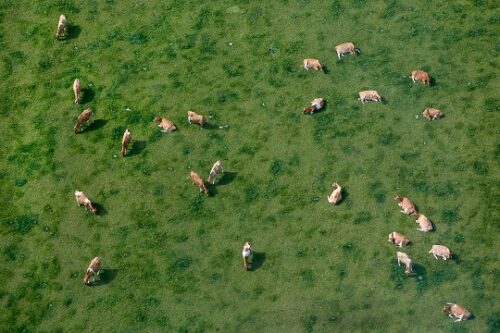29 Sep 2022
Full supply chain transparency sounds like a big thing and indeed it is often much more complex than it would seem at a first glance. Vogue Business writes that leather has thus far eluded the call for more industry transparency and underlines this fact with some shocking findings in third world countries where much of the fashion and upholstery leather supply chains start. Report by One 4 Leather.

It’s been a long-time struggle for the fashion industry in particular to tie all the loose ends of the supply chain together, and still parts are murky in the mists that come with a global economy. Yet, there is a lot of work being done in this direction, by initiatives like the UNECE Sustainable Textile and Leather Traceability project. Here the leather, textile and fashion industries are actively working together in developing future-proof methods of enhancing supply chain transparency.
In the Vogue Business article, there is a lot to unpack and one of the most important things is that the issue at hand is the same for many industries. Though animal welfare is indeed an issue in some places of the world, the impact of supply chains goes beyond and is much more complex. Absolutely, these issues need to be addressed. It’s an enormous fallacy, though, to oversimplify the issues within material supply chains and only address that which yields shocking photographs. Leather is often criticized when it comes to environmental impact, but plastics, fabrics and other materials have their own environmental impact. More importantly, we often overlook durability and end-of-life issues when quick fixes are proposed to the issues at hand. Those ‘animal-friendly’ micro-plastics are now choking up marine life in freshwater and oceans around the world. That is also part of the supply chain.
Vogue Business, which has previously reported positively on the ability of the leather industry to reduce its impact, relies heavily in this article on findings from Peta. The organization has mastered the art of seeking the worst industry situations and presenting these as if they are the common standards. This is, obviously incorrect. Automotive leather tanners, for example, are using leather sourced from the European meat industry. Animals which are kept under the highest standards of animal welfare in the world. Yet, buying one less leather seat will do nothing about the number of animals slaughtered. It’s for that reason the leather supply chain usually is considered to start at the slaughterhouse doors.
When it comes to a complete supply chain, nothing is easy and the meat/dairy/leather/rendering supply chain is one of the most complex ones you’ll find. Yet, presenting one bad example and pretending it represents the whole is unfair. Peta should know, as they themselves struggle to explain some of their practices, like euthanizing thousands of animals each year. Sometimes, the solutions to our global issues are just not simple and the simple answers may create more havoc down the line.
Yes, transparency is a major challenge for the leather industry. Automotive tanners are already working together with the meat industry to realize steps. Where it concerns the imagery that the activist organization so heavily relies on, the problem there is also more complex. The outrage consumers feel at seeing these is not reflected in the end-market industry behavior. As long as poverty-stricken regions are exploited for products at the lowest price in budget fashion, animals as well as people will suffer. Change is a supply chain-wide effort, not simply a matter of banning one by-product.

使用條款 | 隱私政策 | APLF 可持續發展